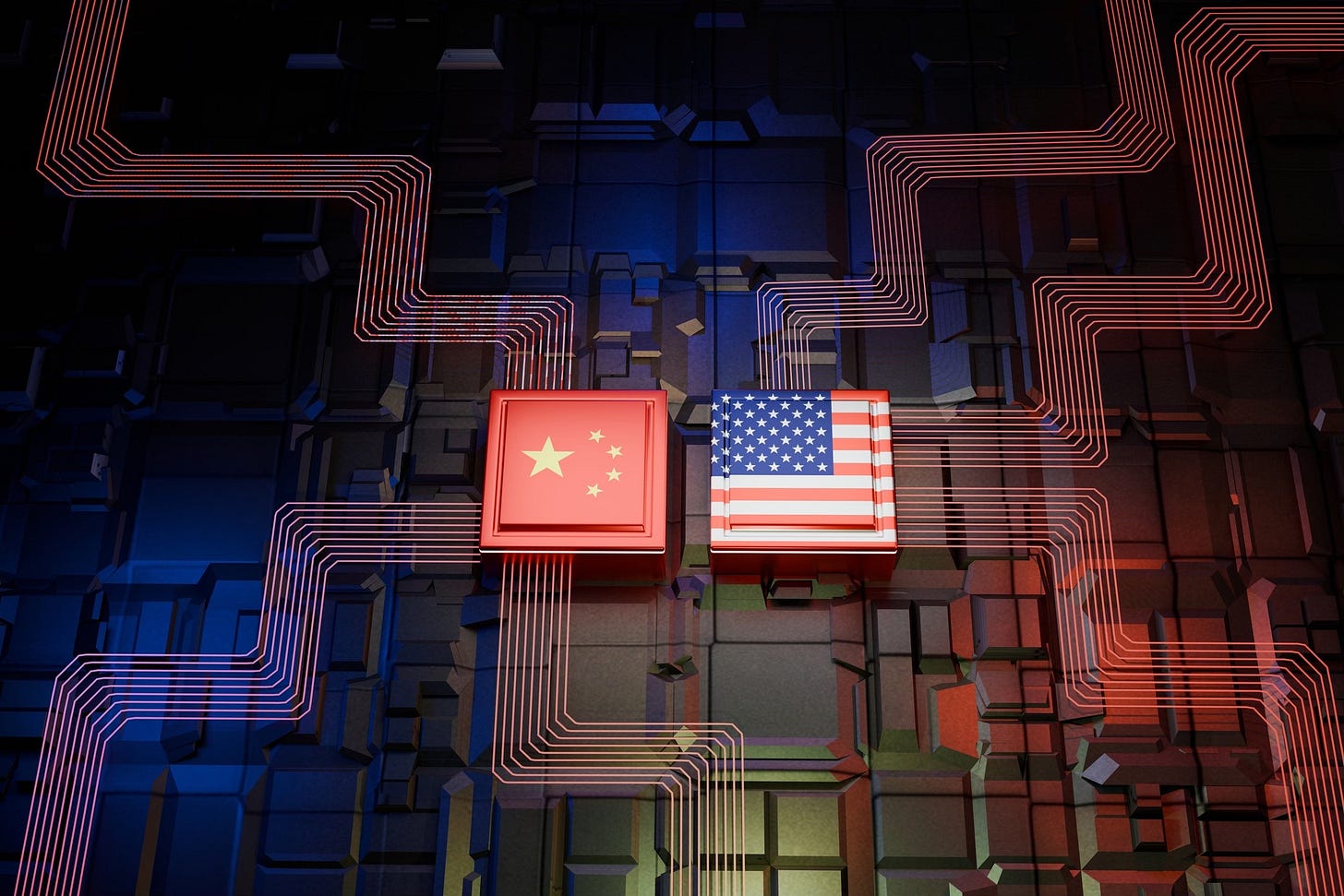Trump Card
Will China’s chip ambitions trigger the next financial crisis?
“If the fiscal cliff occurs, I don't think the Federal Reserve has the tools to offset that event.” – Ben Bernanke
In his weekly newsletter Tree Rings, Luke Gromen has been arguing persuasively that the US stock market now effectively backstops the US Treasury market. With foreign buyers limiting their purchases of US debt, any meaningful fall in stock prices would trigger a significant crisis for the Federal Reserve. The primary drivers of this direct linkage are the persistent US fiscal deficits and the strong correlation between government tax receipts and equity prices. Should a major market correction occur, deficits would surely blow out beyond what can reasonably be managed absent direct monetization—Gromen remains bullish on gold, gold miners, and bitcoin.
Adding significant risk to the current situation is how top-heavy the US stock market has become. Six companies—NVIDIA, Microsoft, Apple, Alphabet, Amazon, and Meta—have a combined market cap of over $19 trillion, more than a third of the entire value of the S&P 500. Underpinning such extreme valuation is the ongoing artificial intelligence (AI) boom and the market’s belief that these companies hold a significant technological edge over global competition.
The most valuable and arguably the most important of the six is chip designer NVIDIA, whose cutting-edge semiconductors form the foundation of America’s AI lead. Privileged access to the world’s best chips gives the other major US technology companies a decisive edge over global competitors, a symbiotic relationship that undoubtedly bolsters their combined run-up in market valuation.
This fact set makes understanding NVIDIA’s business model of paramount importance. NVIDIA does not manufacture its own chips; it designs them and outsources most production of its advanced blueprints to Taiwan Semiconductor Manufacturing Company (TSMC), the global leader in semiconductor foundry services. Core to TSMC’s business is access to ASML Holding NV’s deep ultraviolet (DUV) and extreme ultraviolet (EUV) lithography machines, which are used to pattern the ultra-fine features required for modern processors. It is no exaggeration to say that these three pillars—NVIDIA’s designs, TSMC’s foundry expertise, and ASML’s near monopoly on the most advanced lithography machines—form the foundation of the current stock market boom.
Given their technological lead, it is unsurprising that this group of companies stands at the center of US efforts to stunt China’s AI ambitions. Both US President Donald Trump and his predecessor, Joe Biden, have imposed an escalating array of sanctions and restrictions aimed at limiting China’s access to leading AI technologies. NVIDIA has been forbidden from selling its most advanced chips in China, TSMC has been prohibited from certain collaborations with top Chinese companies, and ASML is barred from selling its most advanced lithography machines to those same players.
We have long argued that sanctions against strong countries never work and often backfire, that Western analysts routinely underestimate the vast potential of China’s technical capabilities, and that artificial shortages in critically important goods eventually create supply gluts as industry invariably responds to the crisis. News from the past few weeks appears to confirm a convergence of these three themes in the chip war. If true, Gromen’s conjecture about stocks and bonds is about to be put to the test. Let’s explore why.



